Top 10 Implementations of 3D in Film: A New Dimension in Filmmaking
It is hard to imagine any other format that has made a more significant an impact on the film industry in such a short amount of time than what 3D has done in just a couple of years. Technically speaking, 3D has been around for several decades, but it did not become a massive staple in major releases until the arrival of James Cameron’s 2009 sci-fi epic Avatar. The film is notable for many reasons – its long development period, its massive budget, and its groundbreaking special effects to name a few – but one of the biggest is Cameron’s implementation of 3D, which would bring the world of Pandora to life in a way that 2D could not have accomplished. And it certainly did; the 3D is arguably one of the film’s greatest strengths, and the immersive factor of the format combined with strong word-of-mouth and critical praise helped Avatar to become the highest-grossing film of all time, making over $2 billion worldwide.
After the incredible financial success of Avatar, studios were quick to jump onto the new bandwagon to release their own 3D movies. Unfortunately, this resulted in a long stretch of studios forcing 3D conversions on movies shot with 2D cameras as an afterthought to earn more money at the box-office. Whatever good 3D films that came out were becoming overshadowed by more studio-mandated, hastily converted efforts that were problematic for films clearly not designed with the format in mind. Clash of the Titans infamously rushed a 3D conversion shortly before the film’s release and was universally panned. The Last Airbender‘s dark lighting resulted in the glasses dimming the image to the point of near-incomprehensibility, Ghost Rider: Spirit of Vengeance‘s frenetic editing made processing the 3D images headache-inducing, and others try to force awkward 3D gimmicks every once in a while to make paying the extra $3-4 more justifiable than just seeing it in 2D.
Nowadays the prevalence of 3D in film releases has left most audiences disinterested in the format, but one thing that is easy to forget is that while there are a lot of bad uses of 3D, there are also a number of films that uses the extra dimension to great effect. And with the improved technology and massive influence of the format, it has attracted a number of notable directors to release their films in 3D. Steven Spielberg, Martin Scorsese, Ang Lee, Alfonso Cuarón, and Guillermo del Toro are just some of the major directors that have made at least one 3D film, and more will likely follow soon after. With each director and project comes varying implementations of the format that can not only benefit the film in 3D, but also surpass its 2D counterpart. The films on this list are all examples that took advantage of the 3D technology to tell the story or enhance the experience in ways that would have been impossible to achieve in 2D.
10. Wingsuit Entry (Transformers: Dark of the Moon)
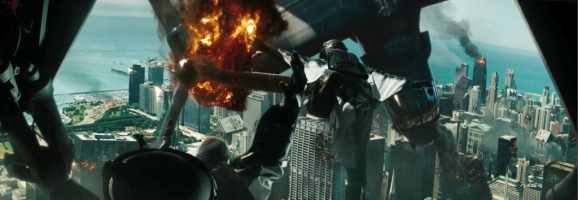
Considering Michael Bay’s penchant for huge explosions, epic battle sequences, and impressive special effects, it should likely come as no surprise that Michael Bay’s first 3D movie would be nothing short of a spectacle, and sure enough, it was (though admittedly an exhausting one). Transformers: Dark of the Moon has many impressive uses of the format in the numerous battle sequences, and the immense size and detail of the Transformers is captured beautifully in it, but the most exciting use of 3D in the film comes during one pivotal moment in the Battle of Chicago. In order to provide support for protagonist Sam Witwicky during the battle, the military sends troops over to Chicago to aid in the battle. However, because of the Decepticon’s strong defense in the city, the only safe way to enter the city is for the soldiers to use wingsuits to glide into the city.
This sequence is one of the best in the movie, starting with the skydivers’ aircrafts being attacked by a Decepticon, forcing them to abandon their crashing vehicles in the air and glide to their destination while swooping around buildings and avoiding enemy fire from Decepticon troops. To make the sequence more believable, Bay was given permission to film skydivers gliding in select points in Chicago, and all of the skydivers had small 3D cameras attached to their helmets to provide a first-person perspective. The result is an exhilarating sequence that seamlessly integrates CGI-filled action with impressive practical stunts, and the 3D greatly enhances the depth of field and the sensation of gliding, making the race to the ground of Chicago almost frighteningly realistic.
9. London Circus (Madagascar 3: Europe’s Most Wanted)
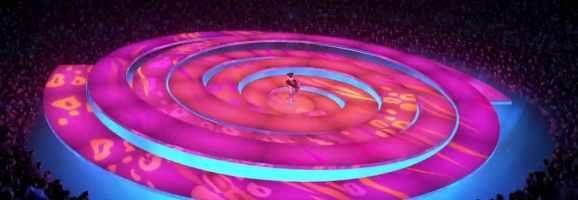
The previous two Madagascar films have always been incredibly energetic and fast-paced with its comedy and animation, so when the third film was being made, the filmmakers decided to take full advantage of their first foray into 3D. Granted, the film is crammed with possibly the most excessive number of 3D gimmicks seen in a movie to date (which will entertain some viewers and irritate others), but while it is more distracting in 2D when the missing effect is obvious, in 3D, it is a roller coaster of dazzling effects, and a sequence in which the main characters perform a circus in London is the best showcase of the format in the movie. It starts off on a relatively simple stage, but after the first act, the stage suddenly transforms into a vibrant and colorful spiral stage, and then the real fun begins.
What started as a simple circus becomes a spectacular 2-minute montage of animals riding motorcycles on the side of the stages, skating on platforms with rocket-attached skates, firing out of cannons, jumping from hoops, and dancing on wires – all tying in almost perfectly to the beat of Katy Perry’s “Firework.” The best part of the sequence is that it is not shown like a regular circus; it is like a dazzling light show where stunts fly and shoot out of the screen in a barrage of stunning colors like the most fantastical Cirque du Soleil performance, and all of the stunts transition one after the other seamlessly. The 3D is used in full force throughout, constantly launching characters and effects at the screen while maintaining the breathless pace of the stunts with exhilarating energy. While the London Circus sequence in Madagascar 3: Europe’s Most Wanted may be style over substance, it is hard to complain when the results are this dazzling and fun.
8. 2D Reality, 3D Virtual Reality (Tron: Legacy)

Fans had to wait 28 long years for it to happen, but eventually the sequel, Tron: Legacy, finally arrived in theaters to push the boundaries of special effects like its predecessor – only this time, it has the added benefit of 3D. The story of Tron: Legacy follows Sam Flynn as he investigates the disappearance of his father, Kevin Flynn, who unexpectedly vanished twenty years ago. Sam eventually discovers that his father had become trapped in a virtual reality world that he created known as the Grid. There are some unique aspects to the use of 3D in this movie – the art direction in particular, with its focus on neon lighting, lent itself beautifully to the format – but one of the most creative implementations in the film is how it differentiates between the real world and the virtual world. To heighten the contrast between the mundane human world and the stunning digital landscape of the Grid, director Joseph Kosinski intentionally used 2D cameras to film the real world segments and then shot all of the Grid sequences with 3D cameras.
The sudden change in dimensionality and depth achieved by the switch between the two worlds allows for a heightened perception of reality and spectacle, which lends itself to a very natural 3D experience that highly benefits the art direction and impressive special effects. There are some memorable uses of 3D in the movie, such as the Disc Wars battle, but perhaps the most exciting use of the format in Tron: Legacy is a Light Cycle match in which two teams of five racers try to kill each opponent on the opposite team. The catch? Their Cycles create long streams of light behind their vehicles that disintegrates anything that touches them, making coordination on the tracks essential. The 3D greatly enhances the depth of field with the streams of light illuminating across the arena, and because of how tangible the extra dimension makes the effects, it makes the dangers of the virtual world seem much greater than anything that the real world could impose.
7. The Other World (Coraline)

Being the first stop-motion animated movie to be shot with 3D cameras, Coraline brings the creepy atmosphere and haunting imagery of Neil Gaiman’s novel of the same name to life with both stunning and terrifying results. The film works great in both 2D and 3D, but there is something about the added dimension that adds an extra factor of creepiness to the shots. The 3D is slightly mundane in the normal, boring world of Coraline Jones, a curious and spunky girl who is bored with her average life, particularly after moving into an old house away from her friends. However, once she discovers a small door inside the house, and in one of the most impressive uses of 3D in the movie, she opens it to suddenly see a hallway stretch as far as the eye can see, leading to another door on the other side practically beckoning for her to come to. She comes into the Other World, where she discovers an alternate version of her mother and father (who disturbingly have buttons for eyes), and finds that life on this side is far more extravagant and fun.
It is at this point that the 3D plays an almost inviting feel to the audience by throwing charming visuals that practically pop out of the screen trying to have fun with its likely young audience. From the lush and beautiful garden, to the fantastic jumping mice circus, and to an extravagant theater performance, there seems to be no shortages of wonders in this Other World. However, when the Other Mother’s true intentions are revealed, the charming and lighthearted nature suddenly becomes harsh and menacing, filling the cinematography with tilted angles, darker colors, harsher close-ups, and particularly menacing 3D images that sometimes feel like they are trying to lunge and grab its viewers. The great use of 3D in Coraline does not quite fall under a particular scene but rather how it uses the format to enhance the scares, luring its young viewers in with innocent 3D visuals and then suddenly turning the format into a descent into their worst nightmares trying to leap out and haunt them.
6. Slo-Mo (Dredd)
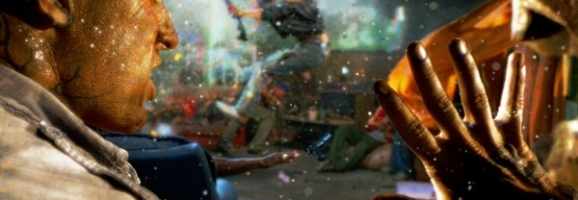
In this 2012 adaptation of the Judge Dredd comics, the film is centered in a post-apocalyptic wasteland where 800 million citizens live under the structures of Mega-City One, a giant metropolis riddled with crime, violence, and corruption. In order to bring order to the chaos, the government created the Judges, officers who could act as judge, jury, and executioner all at once by sentencing criminals on-the-spot, including giving death sentences by executing guilty people without the need for a trial. The film is dark, gritty, and extremely violent (which is befitting of the environment the story is set in), and the story follows Dredd as he and rookie Cassandra Anderson fight their way up a 200-story city block to stop ruthless drug lord Madeline Madrigal (ironically given the nickname “Ma-Ma”), who oversees the production of a new drug called “Slo-Mo,” which affects the user’s perception to make time seem like it is moving at 1% its normal speed.
At a time when slow-motion was (and still is) becoming a major gimmick in Hollywood blockbusters, Dredd provided a unique 3D twist by using slow-motion only during the sequences in which a character uses the Slo-Mo drug. These moments were all shot with high-speed 3D cameras that allow audiences to perceive every detail. The stand-out moment in Dredd is a scene where Dredd and Anderson break into a room whose inhabitants are under the influence of Slo-Mo. The 3D makes every bullet, blood stream, and flying particle effect leap off of the screen while also enhancing the brutally displayed violence in which the bullets create visible shock-waves on the criminals’ bodies, which is made more tangible by the dimensionality provided by the 3D. The film’s cinematography is also heightened during the Slo-Mo sequences, making the regular scenes darkly lit and gritty, and the Slo-Mo sequences vibrant and over-saturated in color, creating rare instances of beauty in an ugly, crime-ridden world.
5. Jaegars vs. Kaijus (Pacific Rim)
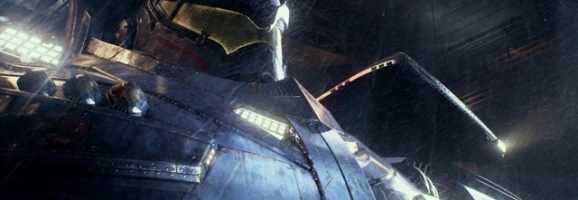
Pacific Rim has the dubious distinction of being the only post-converted 3D movie on this list, but that does not stop it from being one of the biggest spectacles the format has ever seen. If there is a way to boil down the best qualities of the 3D in Pacific Rim into one word, it would all have to come down to this: “scale.” The scope of this movie is absolutely massive, and the 3D makes the size of both the Kaiju and the Jaegars designed to defeat them all the more impressive. Much of this comes to the incredible special effects which convincingly animate the giant mechs and creatures with such believability that you can feel the weight and power that goes into every blow each side deals to the other. The 3D enhances the size of these foes to the point that their surroundings seem to be almost no match for them.
From the prologue sequence which opens with a Kaiju decimating the Golden Gate Bridge, to the Hong Kong battle in which Jaegars and Kaijus smash through buildings like they were nothing, the 3D adds more intensity, power, and impact to the chaotic action. Even when the Jaegars are not fighting, the extra dimension highlights how massive they are compared to everything around it. Its hand is big enough to lift an entire ship out of the water, its foot makes a human worker next to it look like the size of an ant, and its height is well over 200 feet tall. Even the sets of the movie are enhanced by the 3D; the Shatterdome base which holds the Jaegar mechs seems to stretch on further than the eye can see. While Pacific Rim may not have originally been intended by director Guillermo del Toro to be a 3D movie, the end result is perhaps one of the most awe-inspiring and jaw-dropping uses of the format seen in a blockbuster to date.
4. Exploring Pandora (Avatar)
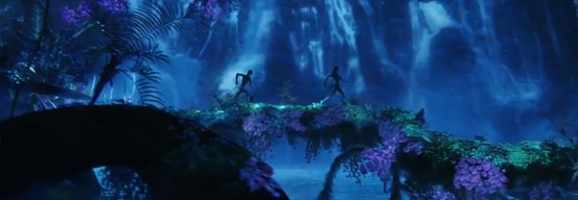
Given the fact that Avatar both became the highest-grossing film of all time and paved the way for numerous 3D films to come, it should probably come as no surprise that this film made it onto this list. Say what you will about the quality of the actual movie, but it is hard to deny that the film is astoundingly beautiful, and the 3D helps bring the vast world of Pandora to life wonderfully. One of the best aspects of the 3D is how vibrant the world of Pandora is, from the distinctly blue skin of the Na’vi to the lush greens of the forests that dominate much of the environments. The vividness of the imagery helps work around the dark 3D glasses, which often muddle the image to the point of being too dim or too incomprehensible to enjoy. Some people have and will complain that James Cameron relied too much on CGI to bring Pandora to life, but the flexibility provided by the CG environments allows the director to do much more with the 3D technology than if it was shot entirely in live-action.
One of the reasons why Avatar is such a stunning 3D experience is how Cameron is able to use the format to enhance the beauty of his imagery and the scope of his story. Forests in the night illuminating the natural surroundings with fluorescent light. Tiny woodsprites dancing elegantly in the sky. The massive, floating Hallelujah mountains which convey an enormous sense of height and depth. The breathtaking flights of the protagonists on flying Banshees across the vast landscapes. The epic climax which fills the screen with arrows, bullets, explosions, aircrafts and numerous species of Pandora coming to the aid of the heroes. The 3D amplifies the action and strengthens the visuals with some of the most realistic and convincing depth and dimensionality seen in a 3D movie. It is no wonder that Cameron established himself as the King of 3D with the release of Avatar.
3. The Magic of Movies (Hugo)
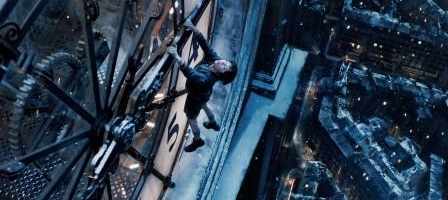
What happens when you give one of the pioneering directors of film a digital 3D camera? In the case of Hugo, one of the most creative uses of the format in any film. There are countless instances where the third dimension is used brilliantly, but perhaps what makes the 3D version a special experience is how it celebrates filmmaking, particularly the work of Georges Méliès, a pioneer in special-effects trickery. Méliès’s films are different from the dark, serious films of today; his were imaginative, childish, and wildly inventive. Whatever he thought of, whatever he could bring to life, he did in the most extravagant way. His films are brilliant, even if they do not always make sense or if they are slightly gimmicky, but his work has always been nothing short of creative.
Because Hugo is entirely centered around the interactions of the titular character and the legendary filmmaker, director Martin Scorsese celebrates the work of Méliès by using the 3D in such a playful manner that, at times, it almost looks like a film Méliès himself would have made. From a giant pendulum in a clock tower extending out of the screen, to dozens of artwork from Méliès’s films dancing elegantly across the screen, to a threatening station inspector stretching his face towards the audience, the 3D makes every individual sequence stand out while also having fun with itself. The art direction especially shines in Hugo by developing characters based on their surrounding environments. From librarian Claude Cabret who is defined by his books, to René Tabard who is defined by his passion for Méliès by all of the filmmaker’s props he has collected, and Hugo himself, who is defined by clockwork.
For Hugo, life is a clock, and a brilliant opening 3D shot starts inside a clock before fading into a view of Paris, whose streets and buildings resemble the interior of a clock. There are also some fun uses of 3D which wonderfully re-create classic movies, such as Hugo’s nightmare which is a combination of Arrival of a Train at La Ciotat and the Montparnasse derailment, or Hugo hanging off of the hand of a clock tower, which is an homage to an iconic scene from Safety Last! Perhaps more than any film in his prestigious career, Scorsese’s Hugo is the greatest celebration of the art and passion of filmmaking, and the 3D is his canvas to bring audiences’ dreams and imaginations to life.
2. Drifting in Space (Gravity)

If there is one essential aspect for a sole survivor movie to capture, it is the immense sense of isolation and loneliness that comes with being lost in an unfamiliar territory. What makes Gravity such a stunning 3D experience is not so much its seamless special effects, immersive cinematography, or its impressive depth and dimensionality, but the harrowing isolation that the extra dimension brings with it. Unlike many 3D movies seen in the past, director Alfonso Cuarón accomplishes something few films have achieved before: it makes the viewer forget they are watching a movie.
The movie begins with a large view of planet Earth before something in the distance eventually comes into view: a small space shuttle attached to the Hubble Space Telescope, with three astronauts floating around it. The camera sweeps and pans its away across all three characters, including one who is currently doing a spacewalk in circles around the space shuttle, and stays with them up until the disaster in which a chain reaction from a destroyed Russian satellite creates a storm of debris that shoots at the spacecraft with the speed of a speeding bullet, destroying it and sending protagonist Ryan Stone drifting into the vastness of space alone – all in one unbroken 12-minute shot. The seamless transitions in both the opening 12-minute shot and the rest of the movie, along with the increased sense of vastness in space and claustrophobia in the space shuttles, create an immersive 3D experience that feels as close to being in space as you could possibly get in a movie.
However, it is the sense of isolation the 3D brings that makes the format much more powerful. Ryan is a lost soul – someone who has suffered a great loss (the death of her daughter), and her means of coping is distancing herself from others, usually by driving aimlessly and listening to the radio to take her mind off of things. In Gravity, space is limbo for Ryan – a place where she is caught between life and death, alive but with no purpose in life until she finds herself fighting for her survival. The 3D highlights the loneliness of the character, and the aimless, uncontrolled drifting in a vast, unknown, and dark environment. The film is a visual allegory for rebirth, a melancholic 3D experience that follows Stone in her perilous journey to get back to her home on Earth. Gravity is a roller coaster of thrills and emotions, and Cuarón’s masterful use of the third dimension results in one of the most meaningful, exciting, and immersive uses in a film to date.
1. Lost at Sea (Life of Pi)

There have been a lot of unique 3D movies over the years, but Ang Lee’s Life of Pi is possibly the most artistically stunning experience the format has ever seen. The story of Life of Pi has the concept of a real-life survival story, but the execution of both the novel and the film adaptation plays it out like a somewhat surreal fantasy, with many unusual and sometimes entrancing visuals that are usually not seen in a movie like this. Rather than just being a straightforward survival story, Life of Pi is also a tale about faith by finding comfort through religion and courage through adversity. It is a larger-than-life story that is told with a slightly unreliable narrator who nevertheless has experience a remarkable journey that tested his bravery, perseverance, and faith, and the 3D visuals bring it to life in stunning fashion.
The story of Pi’s survival at sea begins with Pi and his family traveling from India to Canada on the ship Tsimtsum, only for disaster to strike when a giant storm sinks the ship, forcing Pi onto a lifeboat alone and watch helplessly as the furious waves of the storm sink the Tsimtsum to the bottom of the ocean. This sequence is already intense and emotionally devastating in 2D, but the 3D amplifies the disaster to frightening levels. Raindrops are pouring furiously at the camera, waves are crashing into the ship and swinging Pi helplessly on the lifeboat, and a huge sense of scale as the giant ship is capsized by the enormous storm. In one of the most haunting images of the movie, Pi dives underwater to witness the Tsimtsum completely submerged in the ocean, as he is floating in the vast blue ocean and illuminated by the remaining lights of the ship, before he rises out of the depths, feeling the full weight of his family’s death.
The rest of the movie becomes in some ways a visual exploration of Pi’s state of mind as he tries to stay alive in a boat with no one else for company except for a hungry Bengal tiger named Richard Parker, and the 3D is often an integral part of the imagery. A perfectly still and clear ocean being lit by the vibrant sunrise, reflecting the morning clouds in the sky and giving the optical illusion that Pi and his boat are floating in the sky. A surreal vision in which Pi looks into the ocean and sees swarms of fish, zoo animals, loved ones, and the sunken wreckage of the Tsimtsum at the seabed. Jellyfish illuminating the ocean at light like stars in space, leading to a giant whale rising from the depths of the sea before Pi’s eyes. A swarm of fish numbering in the hundreds racing past Pi’s boat and practically leaping off of the screen in 3D.
Before the viewer knows it, the difference between reality and fantasy begin to blur. Was Pi really stranded with a Bengal tiger, or is the tiger a representation of himself to cope with the loss of his family? It is up to the viewer to decide that. But what makes the 3D visuals so integral to the experience of Life of Pi is how they shape the story, almost like a painting come to life where one could turn off the audio and let the imagery speak for itself. Every implementation of 3D into the visuals of Life of Pi allows Yann Martel’s novel to be brought to be life with such haunting yet unforgettably beautiful imagery that it almost feels like a re-invention of the story itself, emphasizing the fantastical elements while also making it seem that much more real when the dangers feel much more tangible with the added dimension. The harmonious convergence of the two results in a 3D experience that tells the story as much as it enhances it, and the experience would not be the same without it.
What do you think? Leave a comment.











Avatar #1 by a million miles!
The only good ones you have are Avatar (hands down the best), Gravity, Life of Pi, and Tron. Most others have mid grade 3D!
I personally find 3D films very annoying. I haven’t yet found a movie that is better in its 3D incarnation than the 2D one. That’s why I actively avoid 3D movies to the point that I haven’t seen any Marvel movie in the cinema during the last few years due to the fact that they only release in in 3D here in my country.
I will admit that is annoying that your cinema does not have the 2D format (and almost every Marvel movie, with maybe the exception of X-Men: Days of Future Past, had good 3D). It does come down to personal preference as to whether one prefers the 2D or 3D version, but I do think there are some great 3D movies that have been made – particularly in the last couple of years. The only downside is that you have to dig through a lot of mediocre efforts to find them.
There is a good 3D movie? Ok I admit I liked the 3D in Avatar but I’m so anti 3D right now that I’m just gonna take the side that 3D movies suck all together, even though that’s not entirely true. Down with 3D!
While I will not deny there are a lot of 3D movies that are either not good or unnecessary, I think having another way to watch a movie helps add more variety and sometimes benefits the story more in the hands of the right director (seeing Hugo or Life of Pi in 3D is almost an entirely new experience compared to 2D). I do not want to give the idea that 3D is always superior to 2D, but I like to highlight when there is a good 3D movie and when it benefits the movie instead of being a cash-grab. It helps that it is optional so people can choose which format they prefer, so I like having it as an alternative rather than being the only way to see it (unless maybe the 3D version is the only one playing).
“How to Train Your Dragon” is the only 3D movie that’s made me go “Wow”.
I agree on that. I did not put it on this list since I thought the 3D was similar to Avatar and I personally thought that was better, but the flying sequences in both the first and second movies were fantastic in 3D.
Coraline is still the best 3D Ive seen to date. Avatar is a close second though.
I think Coraline was the best 3D movie I saw before Avatar came out. The scene where Coraline opens the little door and a tunnel stretches across to the Other World was incredible; it looked like the tunnel was stretching far across the back wall of the theater.
I don’t know if it was because it was the first film I got to watch in the new 3D format, but Avatar has always been my personal favorite film to watch in 3D. Not only was Pandora breath-taking, but the various ways they used 3D to create immersion. As you said, the audience was able to explore Pandora, but they were also able to experience Pandora. My favorite scene had to be when the protagonist was first learning how to fly on the mount and feeling like I was right there with him as he struggled to tame the beast. It was exciting being a part of that excitement when he finally took control and made risky maneuvers around the mountain. While the same effect was achieved in the 2D version of the film, it didn’t carry the same weight as the 3D version.
Great article, I really enjoyed reading it!
You’re so right about Cameron using 3D to enhance Avatar’s beauty and richness of detail. Sometimes I think the film should be simply muted and played as artwork, projected in a frame, on a huge wall during a party.
I’ve felt kind of “meh” about 3D and have tended to avoid those films, but Life of Pie was a completely different experience. Not only did I love it in 3D, but I went back to see it again!
They used it to excellent effect in Gravity…to where I was short of breath from claustrophobia, and nauseous from the idea of spinning uncontrollably into space until I ran out of air or got sick in my suit. It was really good.
If you fixate purely on 3D effects, my top 3 would be: 3) Transformers: Dark of the Moon (splendid); 2) Jurassic Park (epic 3d, best post-conversion till date); 1) Man of Steel: the best 3d film I have seen thus far (haven’t seen Gravity yet though), also with amazing 3D special effects.
Step Up 3D had the most impressive 3D I’ve seen to date. Yes, the movie was awful (albeit better than the craptacular Step Up 2 The Streets), but whoa, mama! Teh three-deez!!! Shot with the Fusion camera system and brightly lit, the depth was stunning. When I closed an eye to see how it looked flat, it took away the only selling point going for it and was just a hackneyed dance flick. If you’re at all interested in the Step Up series, it’s mandatory to see it in 3D; otherwise, it can be missed at no diminished life quality.
I think Up and How to Train Your Dragon had some of the best 3D effects during those flying sequences.
I think 3D works best when it’s not “oh it’s like it’s right in front of me!” but when it makes you feel like you’re there.
The novelty has completely worn off. The 3D never leaves much of a lasting impression, and never feels REALLY essential to me. After all, if a movie needs to be in 3D, it’s probably not very good, is it?
Now I go out of my way to find 2D screenings, which is getting increasingly more difficult — but I can’t handle those damn glasses.
Check out Travis Pastrana’s Nitro Circus. It was shot in 3D the visuals are truly amazing!! The stunts are wild enough, then they do it in 3D. The MOST impressive 3D show I’ve seen on BluRay yet.
Those glasses give me headache and the funny thing is I’ve to pay a few extra bucks for this..
I don’t pay to go to the movies any more unless its filmed in IMAX 3D. Why not? Because otherwise it looks just as good at home.when I watch the BD version. 3D and high frame rates and IMAX film qualities are variables that add to my enjoyment of the movie, so I pay to see those. I don’t pay to see 2D film work because I can replicate that experience at home just fine.
The Life of Pi in 3D was the film that made me see how great a film can be in 3D. Ang Lee is a great director but The Life of Pi in 3D is a work of genius. I saw the 2D version recently and it’s a pale shadow of the 3D version.
I generally do not enjoy 3D films; however, Life of Pi was an absolute joy.
There are some great 3D movies out there and, used correctly, I personally think it far superior to 2D which does NOT give decent depth of field.
I found the 3D effect worthwhile in Gravity, though the story as a whole was nonsense, and Sandra Bullock’s character would never have been passed fit to go into space. Passable entertainment, but not a film which will last.
Great list.
I love 3D, never watch a movie that has the option, without it. I also love HFR (High frame rates), I tend to embrace technology, have an open mind and don’t sulk like a little child because something has changed. Whiny idiots that don’t like HFR etc are just delaying the inevitable.
It is remarkable to see how far into virtually reality we seem to be heading with all of our entertainment technology. It is becoming less and less complicated to be immersed in the cinema and music. Colleagues and I were just discussing what could be achieved by bringing the screens into a 180 degree position and utilizing our peripherals as well. before long, every movie could feel like a flight-simulation!
It’s kind of insane how almost every movie now that incorporates some form of CGI includes 3-D animation. The “flight simulation” movements have so easily become trite when used in films that don’t need 3-D effects added in, but they can really enhance the imagery of a film focused on CGI art. Loved this article!
Life of Pi…YES! Saw this in theaters in 3D and then watched months later in 2D and the difference is evident immediately. The visuals used in the 3D version helped carry the story and bring this tale to life.
having grown up along side the evolution of 3d films from a gimmick to a stylistic choice, I find their changing appeal to be intriguing. It seems more and more directors decided to film in 3d because it will enhance the film as it makes the picture more vivid, as opposed to merely slapping the phrase 3d onto a movie to increase the marketing appeal. Is it possible that we will ever see a day where the majority of Hollywood films will be made in 3d because of its (seemingly)innate enhancement to film?
Unfortunately, I think the situations will still be similar to how it is now. While some filmmakers are making the extra effort to shoot and design their movie in 3D, it is easier and cheaper to just film in 2D and convert it to 3D afterwards. 3D movies are getting more creative, but it is mostly from directors who want to take advantage of 3D for storytelling; most Hollywood filmmakers tend to shoot in 2D. Unless shooting in 3D becomes easier, it is likely that most filmmakers will just opt to do a 3D conversion.
I haven’t seen a “3D” movie in the past five years that was worth the extra 5 bucks. The adaptations of regular movies into 3D that I have seen are usually subpar, especially if the graphics weren’t made with those effects in mind.
That is unfortunately an issue with most 3D movies nowadays. With the exception of Pacific Rim (which was already filled to the brim with special effects and made the 3D pop out much more as a result), the only ones on this list were filmed and designed with 3D in mind. Most 3D movies are just quick 2D-to-3D conversions that range from bad to decent, but otherwise do not impress because they were not designed with it in mind. There are some great 3D movies if you know where to look, but unfortunately there are more mediocre ones than good.